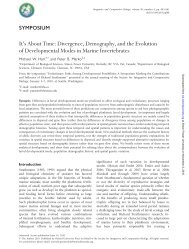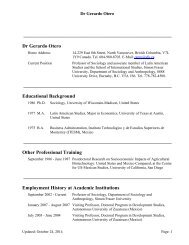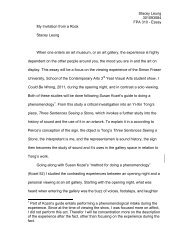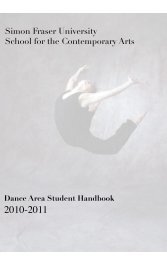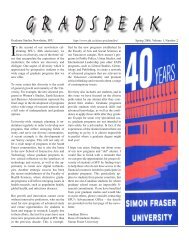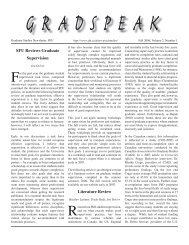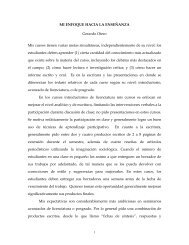WHO ARE THE PEASANTS? David Barkin - Project MUSE
WHO ARE THE PEASANTS? David Barkin - Project MUSE
WHO ARE THE PEASANTS? David Barkin - Project MUSE
You also want an ePaper? Increase the reach of your titles
YUMPU automatically turns print PDFs into web optimized ePapers that Google loves.
REVIEW ESSAYS 273markets, family farmers worldwide face a number of challenges, bothold and new” (xiv). In this book, the author examines the complexity ofchanging strategies of the peasant families for survival and mobility,engaging in a variety of gainful activities, and their “enthusiasm fordefining and solving community problems through collective,grassroots efforts” (75). She notes that “the choices available to [smallscalefarmers] in large part have been shaped by state policies mediatingbetween the global and the local” (120) and concludes that thepeasants:have an important role to play in the health of developing societies. Intensivesmallholder agriculture can absorb excess labor better than large extensive operations.... Given the opportunity to develop their human capital, and an environmentin which they can pursue several economic options, household producerscan use their skills and flexibility to move into the twenty-first centurynot as retrenched subsistence producers merely surviving, not as underpaidplantation and factory workers suffering from poor nutrition and ill health, notas perpetual migrants whose homes and families are disrupting by months oryears of separation, but as the productive backbone of healthy societies. (131)Lauria-Santiago’s study of the emergence of a coffee-growingeconomy in nineteenth-century El Salvador offers a sweeping, criticalview of many other studies that “rest on a very narrow empirical base . . .[and] are framed by the dilemmas of weak, emerging states ... [ratherthan focusing] on peasants’ political activities and their involvement informing the nation state” (3). He hopes to provide “an enriched understandingof the country’s past [that] will bring new visions for its future”(237). His story develops “within the context of processestraditionally perceived as external to the peasantry (agro-exports, stateformation, elite political culture)” (2). The heritage of the colonial systemwas based on indigo, with which the commercial agriculture ofsugar, cacao, indigo, and cattle on the haciendas coexisted and competedwith a smallholder society structured around collectively ownedlands for Indians and ladinos. A strong tradition of local control and theexport economy spurred the creation of new sectors of successful farmerentrepreneurs.As a result, “community and village structures sustainedthe relative prosperity of the peasantry even as social and economicdifferentiation emerged” (14). A weak state throughout the nineteenthcentury forged shifting popular alliances to woo support from an activeand knowledgeable peasantry. The fortunes of this social sectorwere rapidly reversed with the concerted effort to wrest the collectivecontrol of the land from communities and to privatize state-ownedbaldíos. The peasantry became vulnerable to losing its lands because ofdebt, and the “growing number of descendents could only becomemigrant workers or tenants on other people’s lands” (233). “This contradictsthe view that the land concentration of the late twentieth



